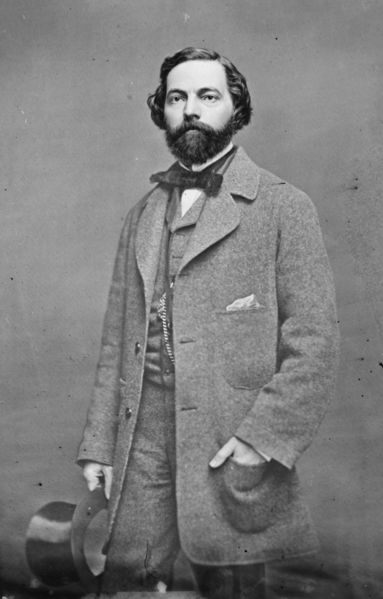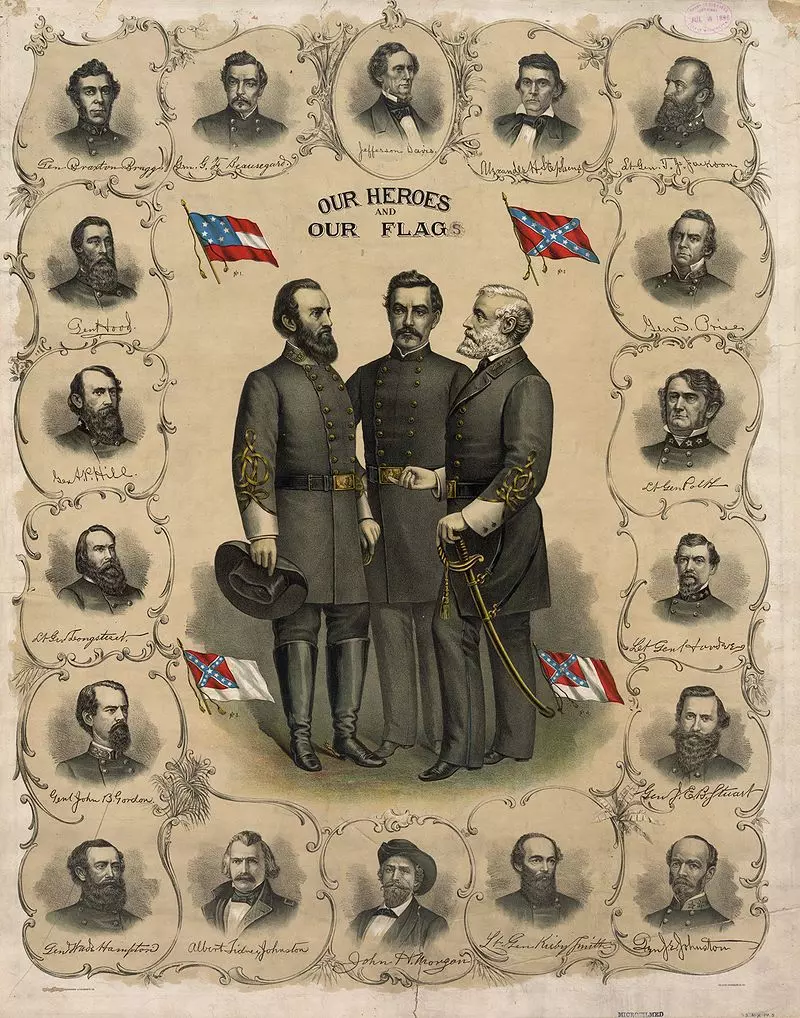By the summer of 1861 there was a pressing need for a Confederate Battle Flag that was distinctly different from the flag of the North.
In Part I of this series we covered how catastrophe was narrowly averted for the Confederacy at Manassas, the first major battle of the Civil War. Here are the words of General Thomas Jordan in a letter written to General Beauregard (Jordan was a colonel at Manassas):
“…I distinctly recollect that the origin of our battle-flag was due to the trouble which arose, as you say, at the battle of Manassas, in consequence of the similarity between the Confederate and Federal flags…. I recollect myself that, after the battle was over, and I had ridden in advance, I saw a flag with a regiment well in advance of me, that I was for the time confident must be the Federal flag, and which I could not believe could be ours from its appearance, even when very close to it. It was only the appearance of the men that gave me confidence to approach.”

General Beauregard was determined that the trouble at Manassas not happen again. One of his military aides was William Porcher Miles, who was also a Confederate Congressman from South Carolina. One of his duties was serving on the Flag Committee, where he had championed a rejected flag design, one congressman describing it as “a pair of suspenders.” Miles told the general of this rejected design, and Beauregard agreed that it would make a good flag for the Confederacy.
Miles suggested to the Committee that a new national flag be adopted so as to avoid confusion on the battlefield. But the committee refused to replace the national “Stars and Bars,” as it had come to be known.
Beauregard then decided there should be a separate flag for battle. On the 4th of September, 1861, he wrote to Miles:
“I regret to hear of the failure about the change of flag; but what can be done is, to authorize commanding generals in the field to furnish their troops with a ‘field, or battle-flag,’ which shall be according to your design…”
The next day Beauregard wrote in a letter to his immediate superior, Gen. Joseph E. Johnston:
“Dear General, Colonel Miles informs me that they voted down any change to our flag by a vote of four to one, he being alone in favor of it. I wrote to him to propose that we should then have two flags – a peace or parade flag, and a war flag, to be used only on the field of battle – but congress having adjourned, no action will be taken in the matter. How would it do for us to address the War Dept. on the subject for a supply of regimental, war … flags made of red with two blue bars crossing each other diagonally, on which shall be introduced the stars – the edge of the flag to be trimmed all around with white, yellow, or gold fringe? We would then, on the field of battle, know our friends from our enemies.”
An historic meeting soon took place in the town of Fairfax Courthouse, Virginia. The purpose was to work out the details of the proposed battle flag. A number of officers were in attendance, including generals Beauregard and Johnston. We have letters that were written later by some of these officers, including one from Johnston to Beauregard:
“…after the battle of Manassas… I attempted to procure, from the different Southern States, State flags for their regiments. Only the Virginia regiments were supplied in this way, however, when, you and other leading officers concurring as to the necessity, I determined to have colors made by the Quartermaster’s Department. Many designs, drawn by members of the army, were offered – most by you…. I selected one of those you offered, but changed the shape to square, and fixed the size: colors of infantry to be four feet, of artillery three, and standards (for cavalry) to be two and a half. …
The now-famous design for the Confederate Battle Flag had been established. Next, a model was needed. Part III will look at how this was done, and what the very first Battle Flags looked like.

